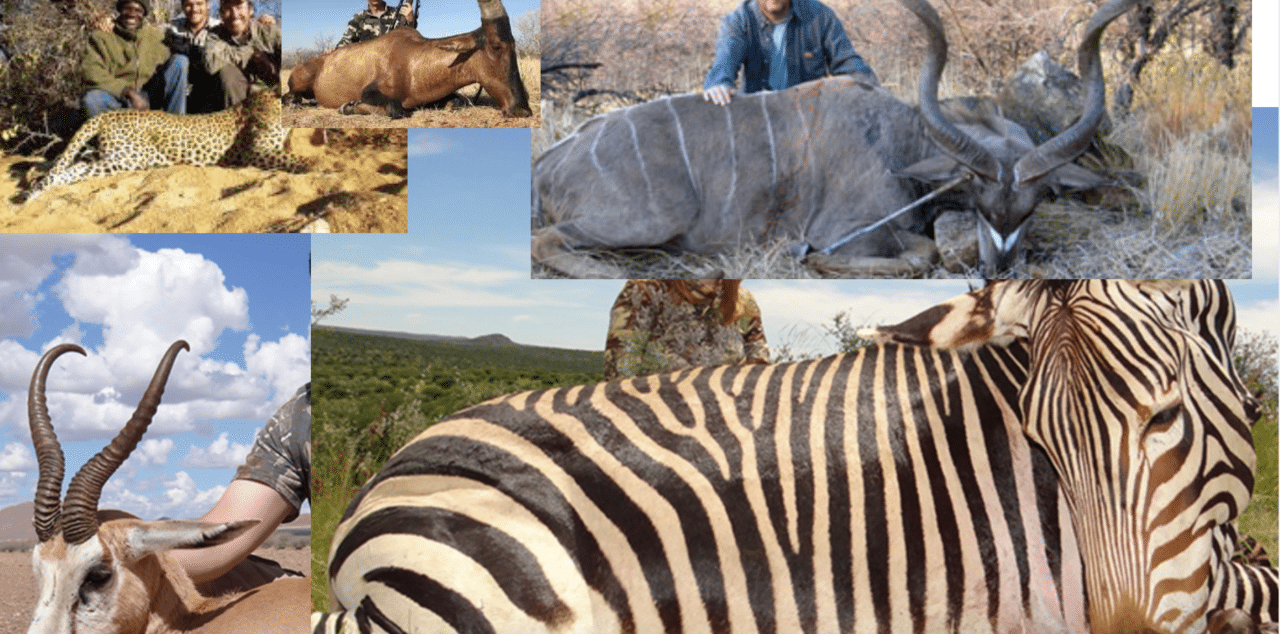Namibia Addresses Social Media Controversies over Trophy Hunting Photographs

“Refrain from posting photographs of dead animals taken during hunting expeditions on social media,” read a July 3 memorandum from the Minister of Environment and Tourism (MET) of the Republic of Namibia. The memo was distributed to all Namibian safari operators and made its way around the international hunting community, leading to a host of questions, official statements from some organizations and a flurry of supporting and condemnatory statements from hunters and operators everywhere.
The memo was signed by Minister Pohamba Shifeta and addressed to all trophy hunters, hunting guides, master hunting guides and professional hunters. The minister called the practice of posting trophy photos on social media “unethical” and said it “tarnishes the image of the well-regulated Namibian hunting industry.” He went on to announce that the ministry was introducing a condition for the issuing of hunting permits that would prohibit hunting operators and guides from posting or sending photos to public platforms.
HuntingLife contacted the Namibia Professional Hunting Association (NAPHA) for clarification on this new requirement, which was directed at Namibian hunting professionals who use social media for marketing. We received an official statement from NAPHA President Danene van der Westhuyzen supporting the minister, or at least what the minister was trying to accomplish. “[T]he minister’s statement was made with the intention of improving the safeguarding of trophy hunting in Namibia; and we are advising the public and our members to support him in this,” she said. Perhaps anticipating comments from hunters and operators who see this as caving in to anti-hunters, van der Westhuyzen went on to say, “This statement should not be seen as shying away from hunting. Our intent is to ensure and promote ethical conduct, sustainable utilization of natural resources and to secure the industry for current and future generations.”
The minister’s efforts, according to NAPHA, were spurred by a combination of irresponsible online marketing by some operators, as well as “recent uproars on human wildlife conflict issues and a lot of noise on social media platforms without valid facts and information.”
MET had issued the memorandum immediately after its July 2nd release of a revised Human Wildlife Conflict policy strategy. Namibia recently has suffered a number of vigorous and public attacks by anti-hunters and animal rightists for its policies on hunting black rhino and other species. Several of these incidents sprang from misleading online marketing for “rare desert elephants” and problem animal hunts, including some for lion. Additionally, a spate of controversies has erupted over social media posts with trophy photographs of animals commonly referred to as zoo species, such as zebras and giraffes.
In 2017, MET was going to prohibit all marketing of trophy hunting on the internet but backed off the ban when NAPHA informed the ministry how critical online advertising is for hunting operators. The association has stepped in again over this recent effort to ban all trophy photos on social media. On July 11, 2018 NAPHA informed its members that the social media ban is now on hold.
NAPHA, along  with the Namibian Association of Community Based CBNRM Support Organisations (community conservancies), the Namibia Nature Foundation (NNF), and Wildlife Ranching Namibia (WRN), met with officials from MET to find a way to address concerns about marketing practices without hampering companies’ abilities to promote and sell their services. In another letter from van der Westhuyzen, she provided several suggestions that would address the minister’s concerns without implementing a total ban on trophy photos in social media.
with the Namibian Association of Community Based CBNRM Support Organisations (community conservancies), the Namibia Nature Foundation (NNF), and Wildlife Ranching Namibia (WRN), met with officials from MET to find a way to address concerns about marketing practices without hampering companies’ abilities to promote and sell their services. In another letter from van der Westhuyzen, she provided several suggestions that would address the minister’s concerns without implementing a total ban on trophy photos in social media.
Among the suggestions is a clearly defined guideline for responsible social media posting that would be distributed in both print and digital formats to all safari operators and their clients. Based on clearly defined guidelines, MET could enforce the regulation and penalize Namibian operators who do not comply.
Suggested guidelines include respectfully positioning animals, not sitting or leaning on animals, refraining from posting grip-and-grin photos of dead animals and avoiding posts of the most controversial species, i.e. elephants, lions, rhinos and others. The guidelines also encourage posts about quick, ethical kills; ethical and legal hunting and its stewardship of wildlife; as well as humanitarian benefits and habit preservation funded by hunting.
In her letter, van der Westhuyzen says, “The point is not whether a certain photo is moral or ethical… What is important to note is that we are exposing ourselves, hunting, and our country to a world of people…. We have to be aware of all of these sectors, take responsibility for how we expose ourselves and be absolutely and without a doubt convinced that by doing so, we are securing our industry for current and future generations.”
A follow-up meeting sponsored by WRN with MET and all stakeholders is scheduled for late July. NAPHA hopes the gathering will result in a mutually agreed practice that will effectively address the challenges of social media and possibly engender a practice the rest of the hunting community can follow. Stay tuned for our next report.
